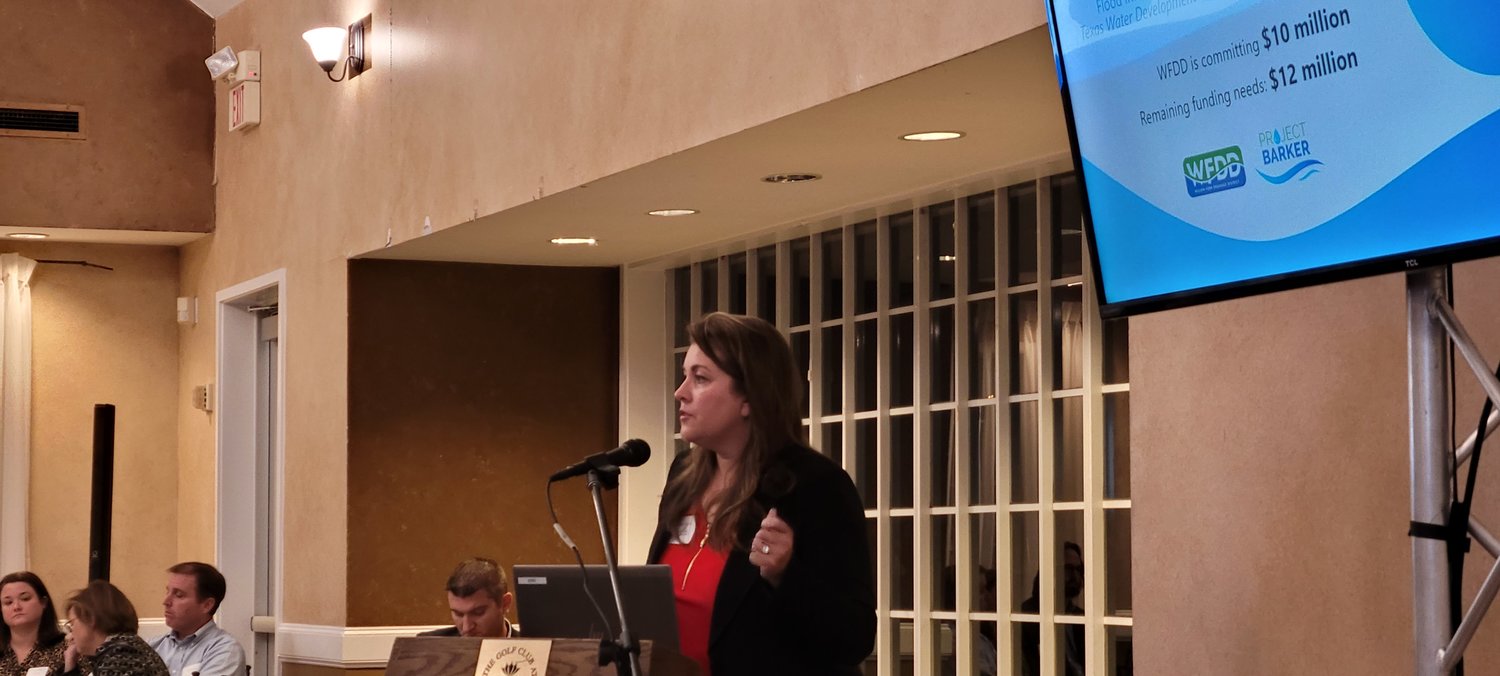Project Barker may increase capacity of reservoir
Funding needed to match drainage district investment
If Wendy Duncan, president of the Willow Fork Drainage District, and her fellow board members have their way, the capacity of Barker Reservoir could be increased using local funding – and be …
This item is available in full to subscribers.
Attention subscribers
To continue reading, you will need to either log in to your subscriber account, or purchase a new subscription.
If you are a current print subscriber, you can set up a free website account and connect your subscription to it by clicking here.
If you are a digital subscriber with an active, online-only subscription then you already have an account here. Just reset your password if you've not yet logged in to your account on this new site.
Otherwise, click here to view your options for subscribing.
Please log in to continue |
Project Barker may increase capacity of reservoir
Funding needed to match drainage district investment
If Wendy Duncan, president of the Willow Fork Drainage District, and her fellow board members have their way, the capacity of Barker Reservoir could be increased using local funding – and be the first “domino” in place to add about 127,000 acre feet of flood storage capacity to the reservoir over time.
“If we sit around and wait for the federal government to start this, we’re going to wait another 100 years, and we’re going to have another three studies that have done nothing,” Duncan said.
Duncan was joined by Allen, Boone, Humphries and Robinson partner Stephen Robinson whose law firm provides legal services to many special purpose districts such as municipal utility and drainage districts throughout Greater Houston, including several in the Katy area. The pair spoke to a gathering of MUD directors at the Cinco Ranch Country Club and said Project Barker would start with an initial phase that would dig out about 4.8 million cubic yards of material. That would increase the capacity of the reservoir by about 5,000 acre feet of retention – or roughly the equivalent of the volume of five Astrodomes.
Robinson said drainage studies throughout Greater Houston go back to the early 1900s to the study that led to the creation of the Barker and Addicks reservoirs. Those two facilities have been improved somewhat over time with flood gates and other upgrades, but two items suggested at the time were never completed.
“And I submit to you, the reason Houston flooded in Hurricane Harvey is exactly the same reason that Houston flooded in 1939,” Robinson said.
A third reservoir north of the city of Katy and a diversion channel to take water south into Fort Bend County, around the city of Houston and to the Gulf of Mexico were not built. The lack of that additional detention, retention and floodwater conveyance are behind much of the damage caused by the Tax Day Floods and Hurricane Harvey, he said.
Duncan and Robinson said they don’t anticipate that the third reservoir or southern diversion channel will be completed, nor will improvements to the Buffalo Bayou due to red tape at the state and federal levels. However, they said improvements to Barker Reservoir could be undertaken with funding from grants, Willow Fork Drainage District and contributions from neighboring special purpose districts.
Duncan said the total cost would be about $24 million for the first stage of Project Barker. Of that, the Willow Fork Drainage District is committed to funding $10 million. An additional $1.9 million would be provided by a grant from the Flood Infrastructure Fund. The remainder would be taken up by neighboring districts if they commit to the plan, Duncan said. Much of the funding would be paid over time through a Texas Water Development Board Flood Infrastructure Loan over a 30-year term.
The remainder of the funding is not committed to by those neighboring special districts as yet, but Duncan has offered to present the plan to those districts’ boards at their upcoming meetings. She added that the U.S. Army Corps of Engineers, the agency responsible for maintenance and operation of Barker Reservoir has been cooperative and encouraging regarding the project.
Lynda Yezzi, chief of public affairs for the Corps’ Galveston District said the group is supportive of Project Barker and is coordinating with the drainage district.
“This coordination includes working with WFDD to secure a “right of entry” onto government land to allow WFDD to do its preliminary environmental and engineering work, which is needed prior to final project design. The Galveston District will continue working with WFDD throughout the project to ensure the final design won’t negatively impact the safety and operations of Barker Dam and Reservoir,” Yezzi said.
Duncan encouraged the MUD directors at the event to go back to their boards and see what sort of funding they could pitch in to make the project happen.
“We need to start projects that will actually provide us with some flood mitigation – some additional protection…,” Duncan said. “And, we need to be the generation that actually provides some good mitigation for the future to protect us and protect the future.
Keywords
Project Barker, ABHR, Allen Boone Humphries Robinson, Barker Reservoir, Wendy Duncan, Stephen Robinson






